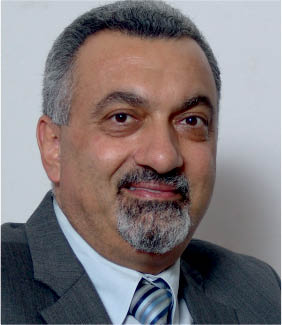It was a great honor for us to have been named members of the Presidential Committee for the Restoration of the Church of Nativity more than ten years ago by His Excellency President Abbas, president of the State of Palestine, entrusting us with one of the most important religious and historical sites in the world. The responsibility was tremendous as the church is a center of attraction for many and visited daily by countless pilgrims from all over the world. Our motto from day one was “Administrative or technical errors are not an option.” Our cautiousness in dealing with the church required great efforts that could not be estimated in advance. Furthermore, the work that we had to handle exceeded all expectations.
We were entrusted with a unique church, unlike any other. It is the place where the earth came into close contact with the body of Jesus Christ, the messenger of love and peace. It is here that Christianity was born, heralding an important chapter in the history of humanity. The Church of the Nativity is one of the oldest existing churches, preserving a long history of the Christian faith. Millions of pilgrims have visited the church over the past 17 centuries, and Palestinians in general and Bethlehem residents in particular are closely linked to the site. It is here that Christmas celebrations are launched every year, announcing to the world a new year.
When the renovations began, the church was in a dismal state. For starters, the ceiling was at risk of collapsing due to the crumbling and dilapidated woodwork. Water poured through the ceiling, and the mosaic murals had turned black, almost losing their appearance. There were also some construction problems in the walls, the pillars that support the ceiling were cracking, and their bases were corroding. The floor mosaics had suffered from long years of neglect, the paintings were peeling in several locations, the wooden windows were crumbling, and some of the wooden supports that connect the pillars were rotten.
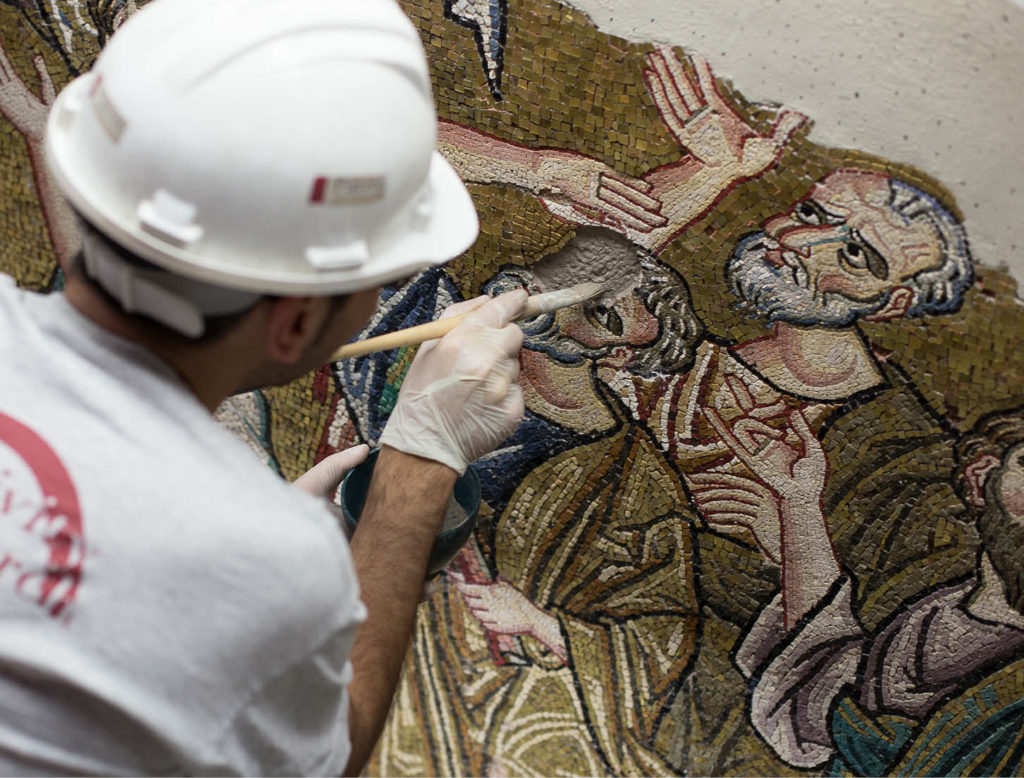
There were cracks in the outer structure of the building as well, and the pointing had fallen off several of the church walls. The entrance hall, which suffered the collapse of its ceiling during the British Mandate era, had not been renovated but rather had wooden supports that were still in place when the current project began. This was further exacerbated by the numerous other problems that could be easily seen or those that were not readily detected and were discovered during the renovation works. In brief, the church was in a dire situation, with every new day bringing the threat of collapse.
The Presidential Committee for the Restoration of the Church of the Nativity drew up a comprehensive plan for the church renovations, focusing first on the documentation of the existing conditions through detailed plans, topographic maps, pictures, videos, and various drawings. The plan also included a study of all the church components from the ceilings to the foundations. Numerous new modes of assessment – such as optic and acoustic tests, and lab tests – were used to determine the various historical eras in the history of the church. An international coalition that consisted of a group of European universities and multidisciplinary experts was contracted to undertake all the studies following the initiation of an international tendering process. The international team was also required to propose the appropriate methodology for renovating each component in accordance with the internationally agreed standards recognized by the relevant international agencies, and determine the bills of quantities and cost estimates. This was made possible through the significant support and assistance from CCC (Consolidated Contractors Engineering Company), which was very generous with its financial support and international expertise.
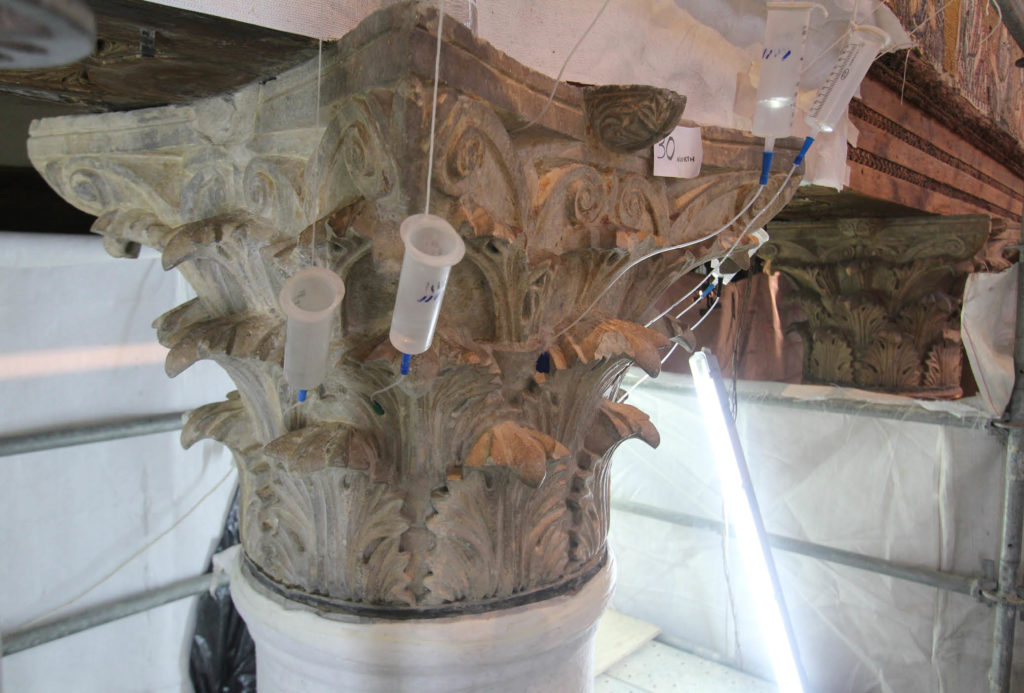
Once the study and documentation phase was completed and a comprehensive review made of its findings and recommendations, international organizations were asked to evaluate the studies and advise us on how to deal with the recommendations. Upon the completion of this process and the identification of the best practices, the renovation tender was published at an international level. The Italian company Piacenti SpA won the tender. To avoid any errors in implementation, Imad Nassar, a full-time engineer with years of professional experience inside the country and abroad, was hired. The Palestinian company CDG (Community Development Group) was tasked with the mission of representing the presidential committee in overseeing the works. CDG deployed its engineers from a variety of specializations to monitor the works and advise the presidential committee prior to making any decisions. Consequently, renovation works started after years of planning and studies.
In this respect, the committee would like to commend the cooperation and unconditional support of the three churches who hold rights in the church according to the Status Quo agreement, namely, the Greek Orthodox Patriarchate, the Custody of the Holy Land, and the Orthodox Armenian Patriarchate.
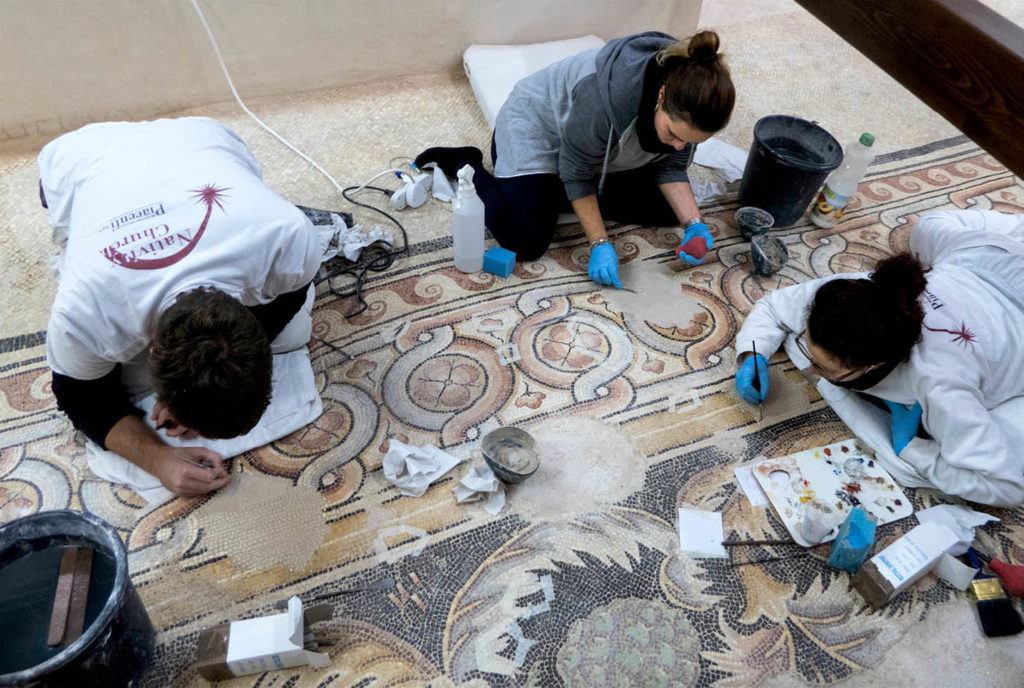
Furthermore, the unconditional support and encouragement by His Excellency the President of the State of Palestine have had a great impact on the work’s progress. President Abbas had said that the Church of the Nativity would be renovated regardless of what that would require. He instructed the government to cover one million dollars towards funding the studies. This generous grant paved the way for local and international donations, attracting contributions to this vital project from countries, agencies, the private sector, and individuals. The surprise was manifested in the ability of the Palestinian government, the private sector, and Palestinian individuals inside the country and abroad to contribute funds to cover half the costs that have been incurred so far, approximately $15 million. This makes the project one of a kind. We express our thankfulness and gratitude to all those who donated to the renovation of the church. In addition, and since the start of the works, Deloitte-Touche has audited all our accounts and presented its annual report to us and to the donors.
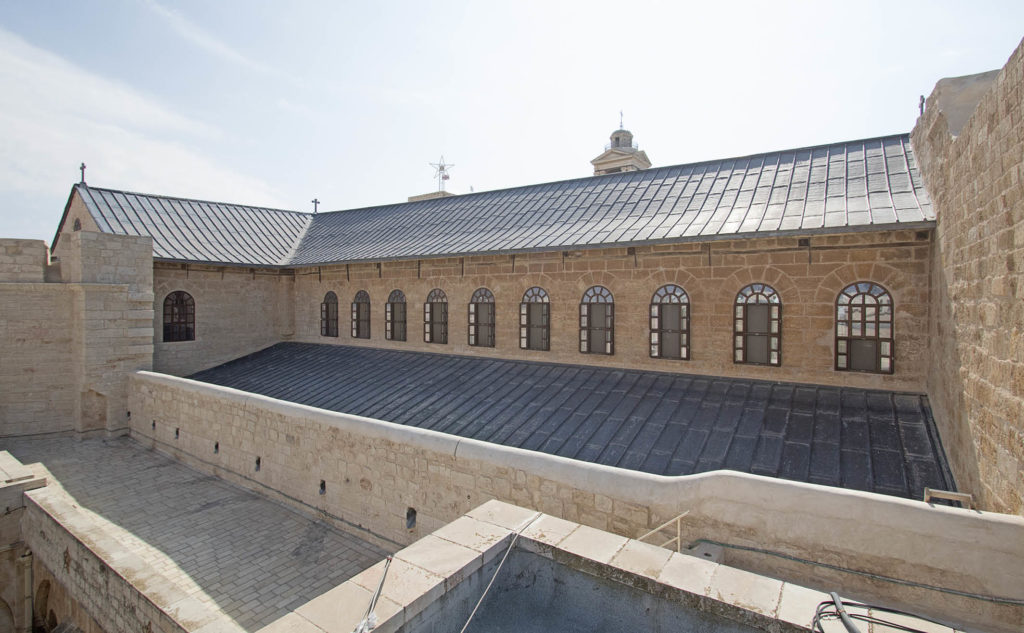
The work of the committee culminated with a distinguished international testimony of which we are proud, namely, the announcement by UNESCO’s Director General in June 2019 in Baku that the renovation of the Church of the Nativity is considered a successful model that should be adopted internationally. The Church of the Nativity was removed from the list of World Heritage at Risk and reinstated on the regular list. This statement testifies to the excellent technical standard that was adopted for the renovation of the church and to the ability of the State of Palestine, despite the ongoing Israeli occupation, to protect and preserve its cultural heritage and handle it with professionalism and good governance.
Finally, it is with pleasure and on behalf of the Presidential Committee for the Restoration of the Church of the Nativity that we dedicate this accomplishment to all humanity. We hope that all people will enjoy visiting the renovated church that has become a magnificent artistic and architectural landmark. Tourists can enjoy the beauty of the newly restored mosaic murals and floors, and see the drawings on the pillars for the first time after years of neglect. Today, the condition of the church suits its glorious significance, and the church is now protected for centuries to come.
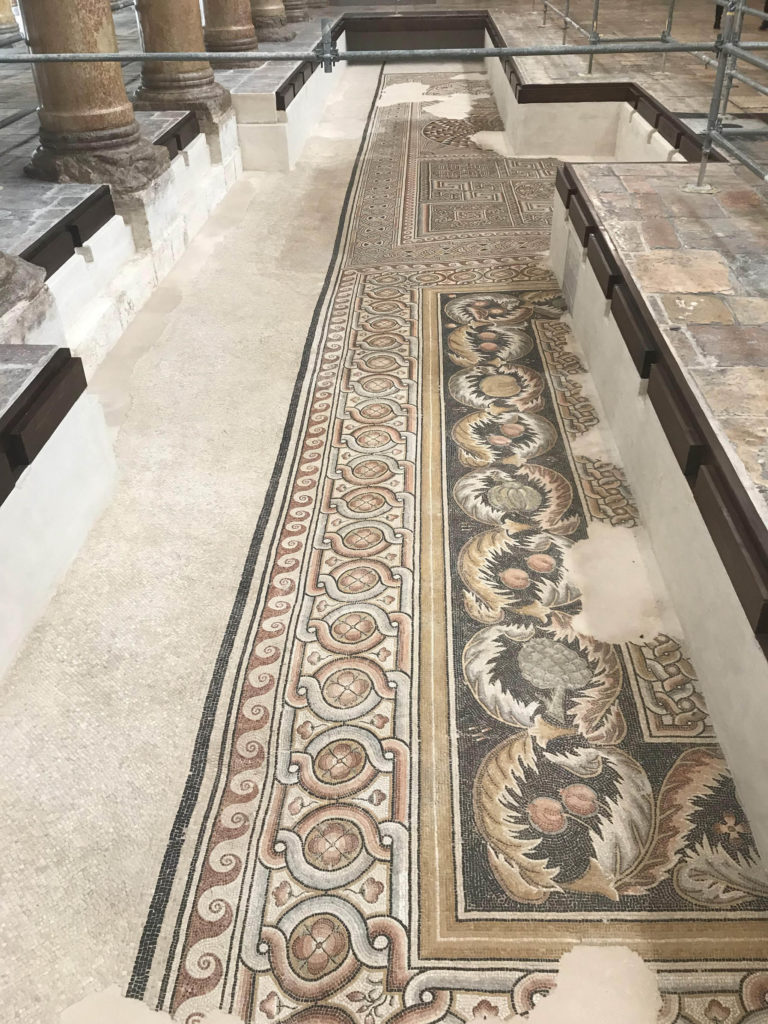
We express our special thanks and gratitude to all who contributed in any way to this project: His Excellency the President of the State of Palestine, the Palestinian government, the members of the Presidential Committee for the Restoration of the Church of the Nativity, experts, and companies that worked on site in Palestine and abroad, as well as all who provided financial and moral support during any phase of the works.

